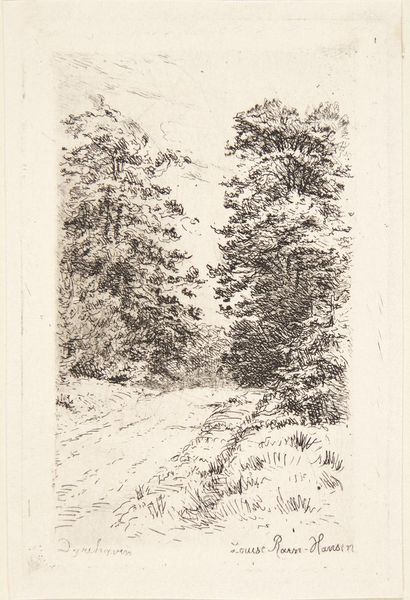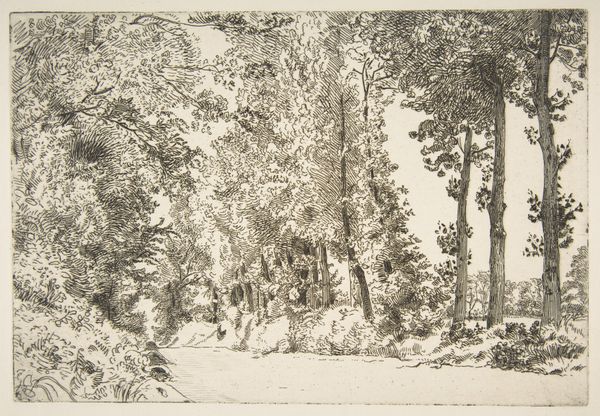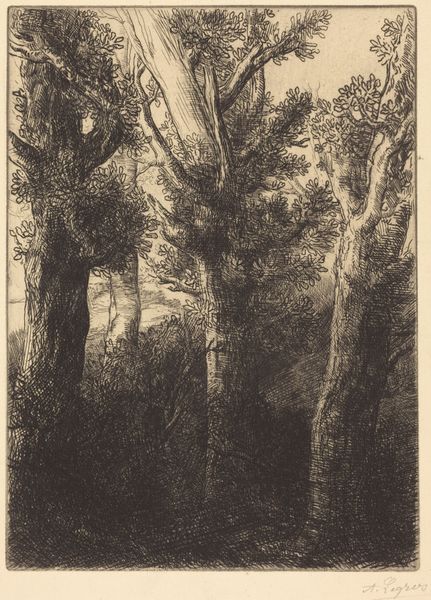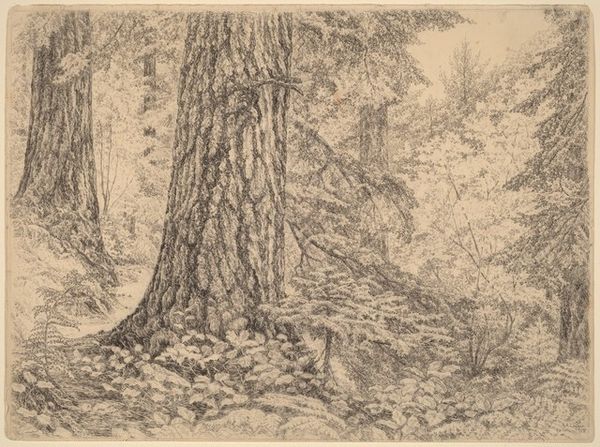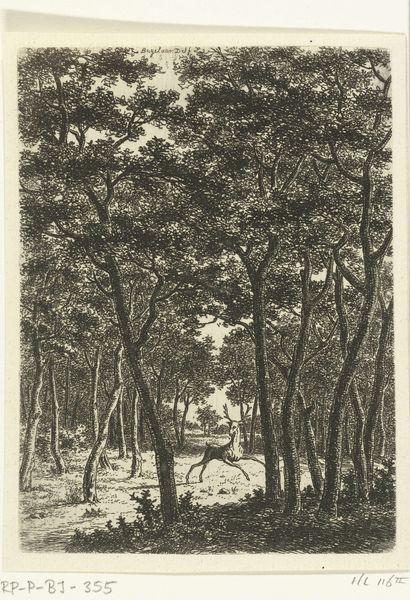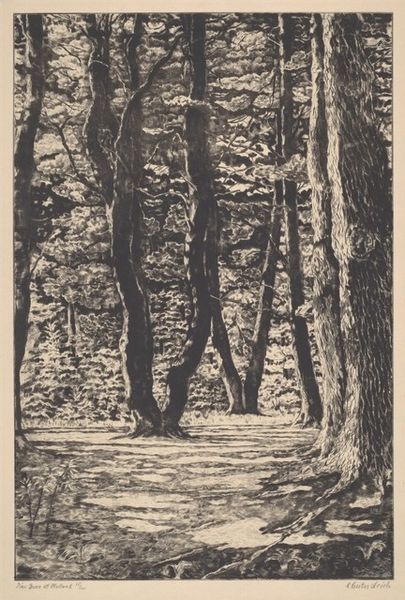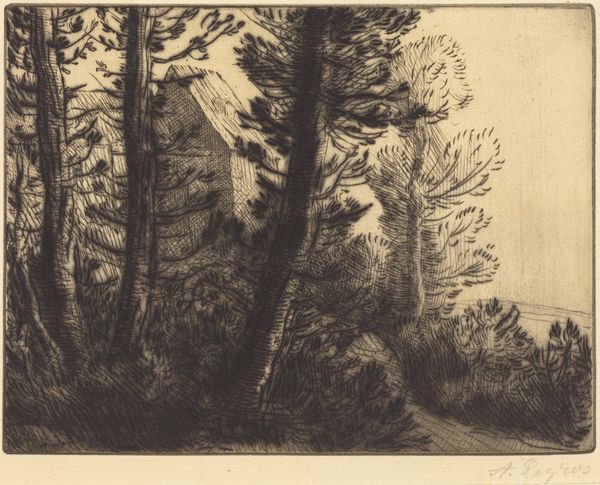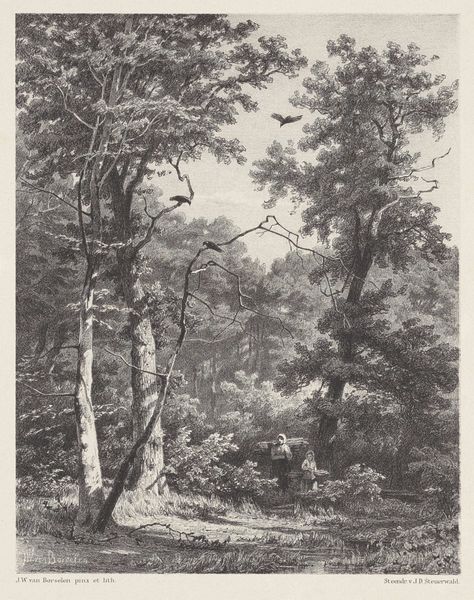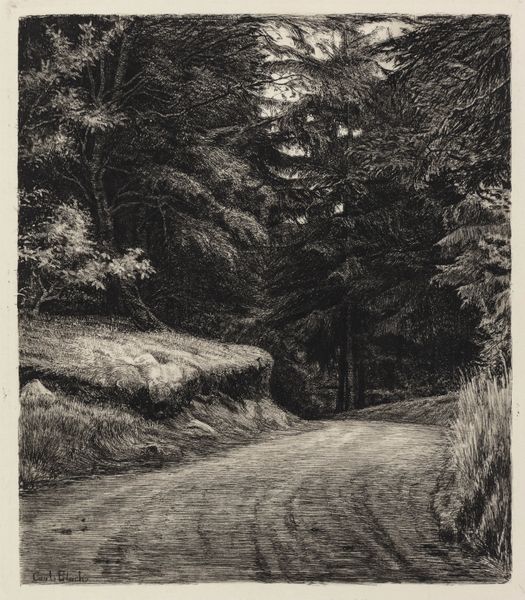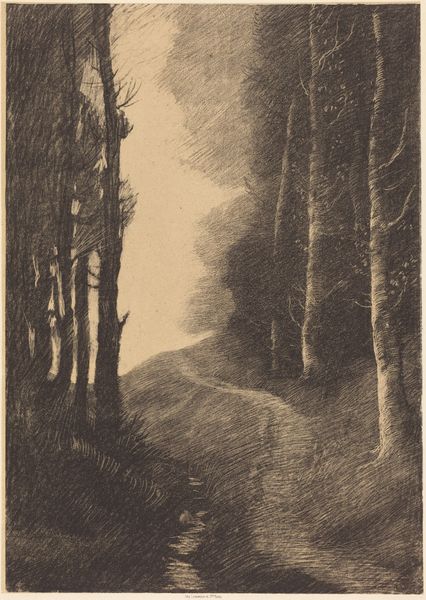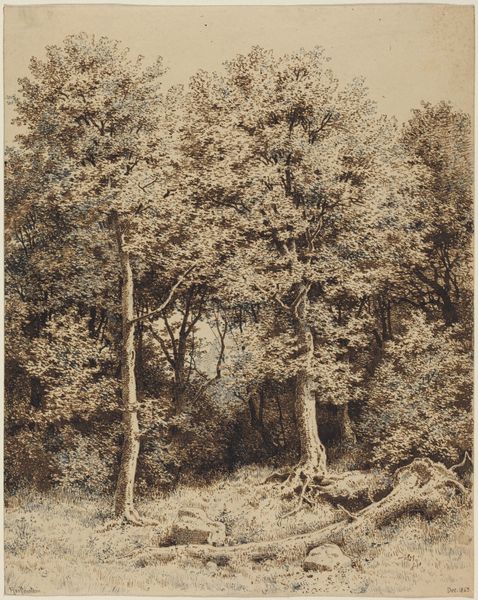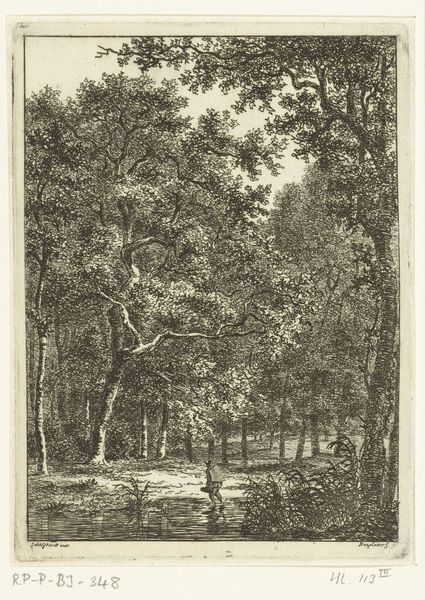
drawing, print, graphite
#
drawing
# print
#
landscape
#
pencil drawing
#
graphite
#
realism
#
monochrome
Copyright: National Gallery of Art: CC0 1.0
Curator: Before us, we have Edward Timothy Hurley's "Kentucky Woods," a graphite drawing likely executed around 1922. It offers a glimpse into a wooded landscape. What are your initial thoughts? Editor: There's an almost stark quality to it. The contrast between the light filtering through the trees and the shadows gives it a certain depth. The linework seems pretty precise, capturing the textures of bark and foliage. It evokes this stillness and a quiet sense of being present in nature. Curator: Absolutely. Hurley was quite interested in capturing the regional characteristics of the landscapes around him and bringing attention to nature and environmental concerns. Hurley lived and worked at the period when the Country Place Era was at its apogee in American landscape design. As country estates multiplied throughout the land, a lifestyle once reserved for a social elite began to trickle down the social ladder. Editor: It makes me think about the materials he used. I’d be curious to know about the graphite itself – was it locally sourced, reflecting a connection to the region's resources? You see the careful layering and shading, a testament to the time and labor invested in rendering each leaf and branch. Curator: That's insightful. Hurley was an engraver who worked most of his career for the wealthy Rookwood Pottery Company in Cincinnati. There's some critical views of the elitist social structures associated to the Arts and Crafts movement, and Rookwood pottery was known to promote high production and material excess. We could interpret Hurley’s turn to landscapes as a way for the author to escape the commodity culture and get in touch with nature, although that would be slightly ironic. Editor: Perhaps he found a different kind of value and deeper connections with his surrounding landscapes! These drawings speak to a desire for handcrafted expression. To engage directly with the materiality of the world to escape from capitalist culture? Curator: It seems plausible. Also, this drawing dates from the beginning of a broader public discourse regarding national parks. Editor: Overall, the image highlights a deep sense of introspection, but there’s this implicit socio-political conversation about production versus material enjoyment too. Curator: I agree completely. It gives food for thought! Editor: It does, indeed. Thanks for sharing your insight!
Comments
No comments
Be the first to comment and join the conversation on the ultimate creative platform.
